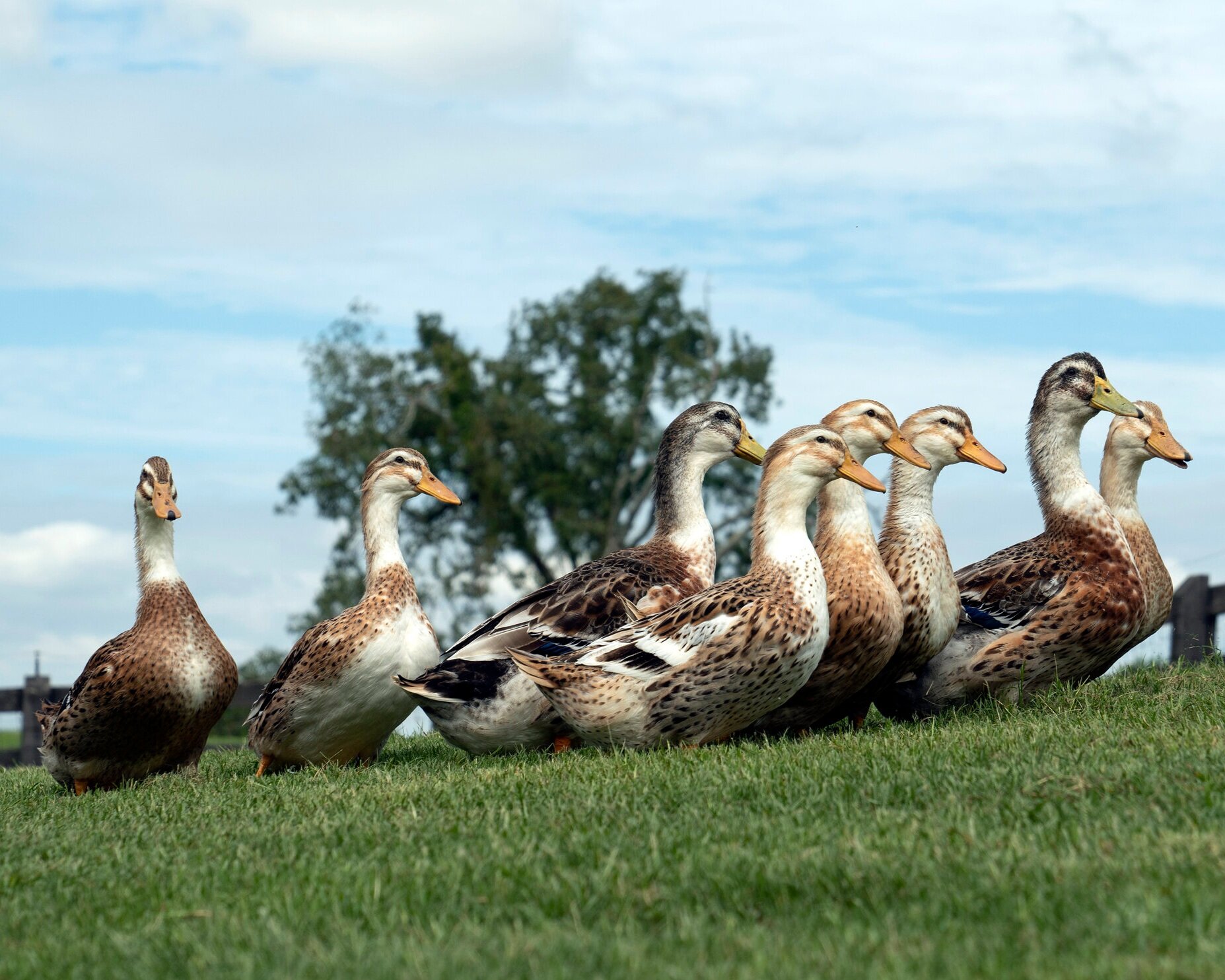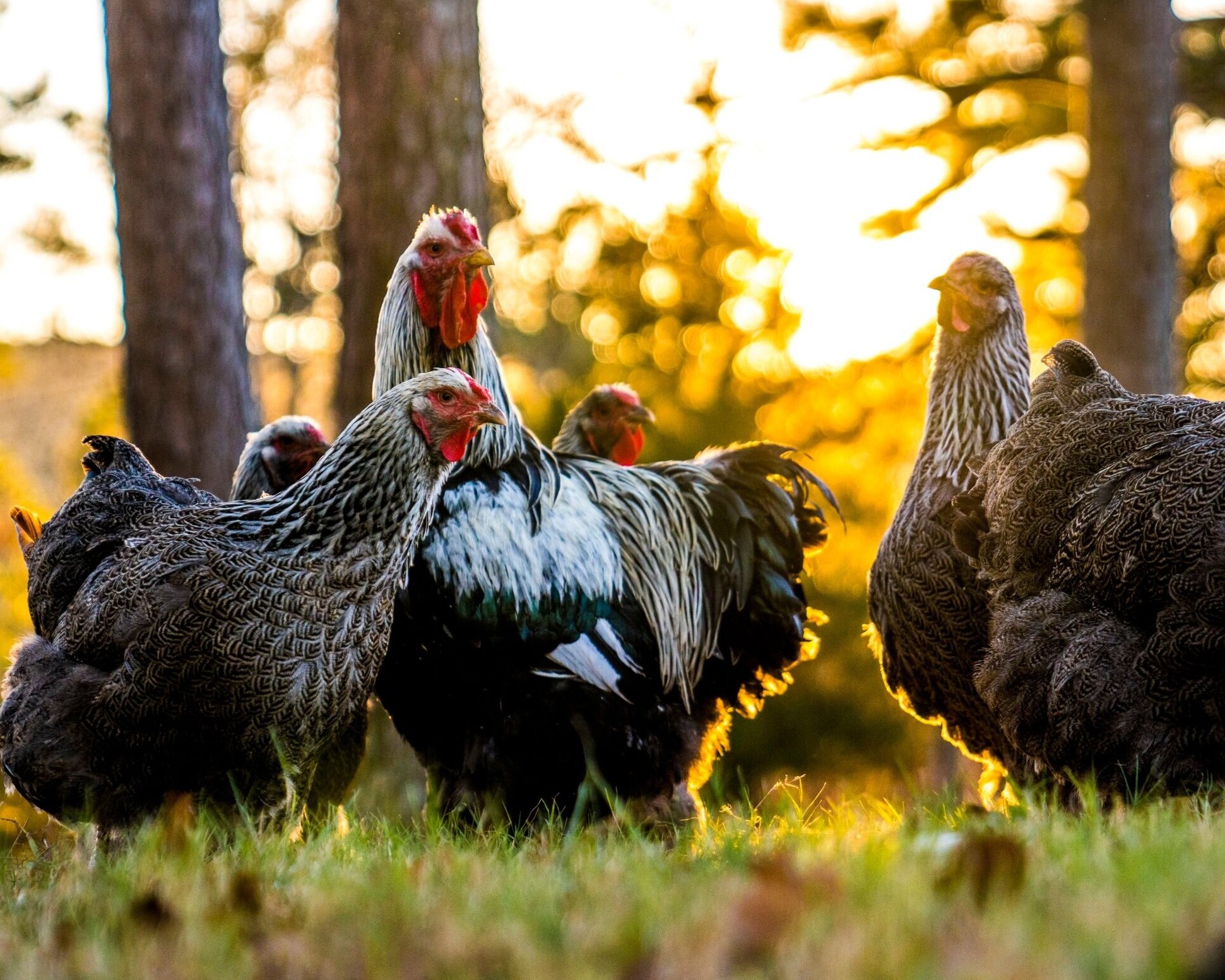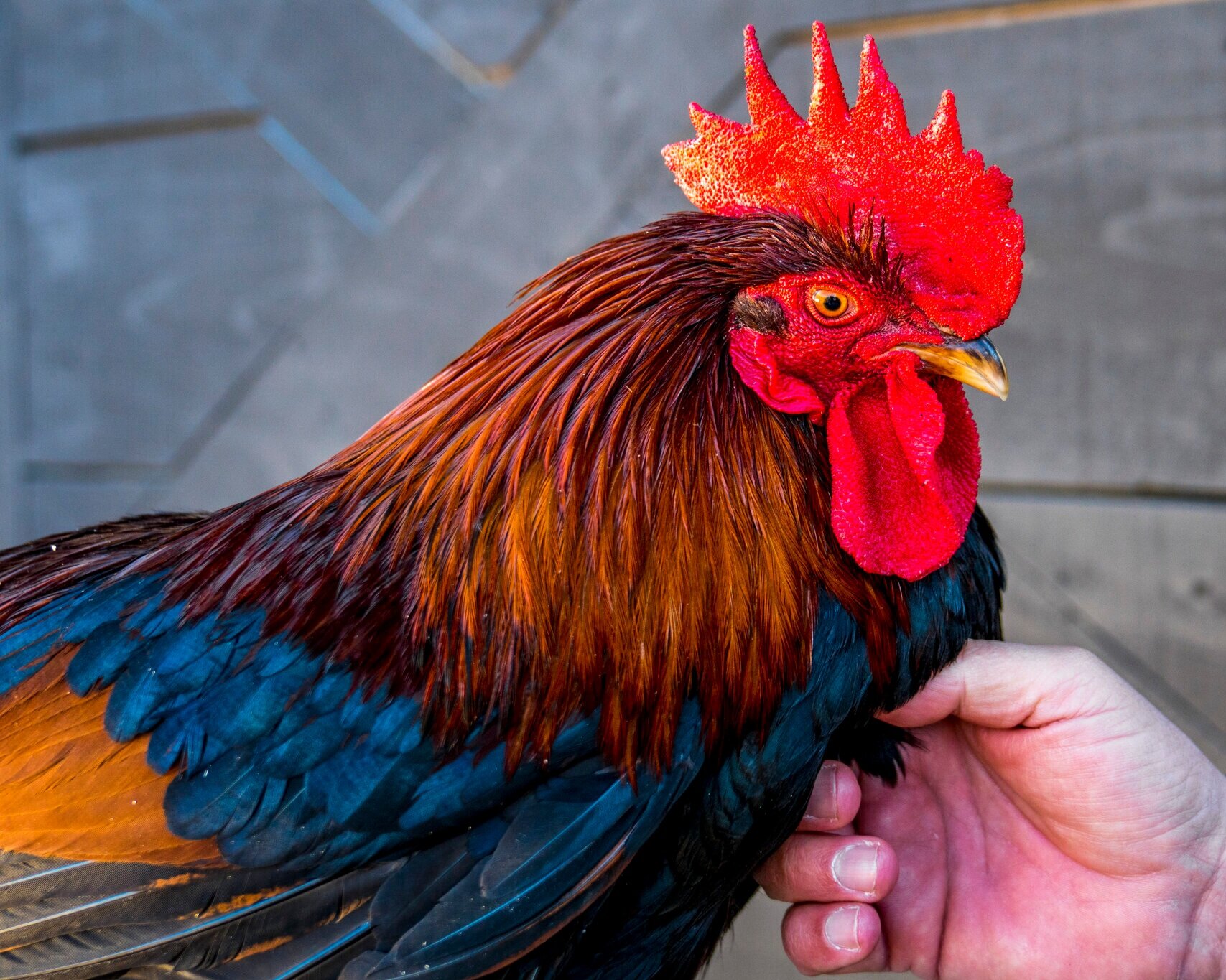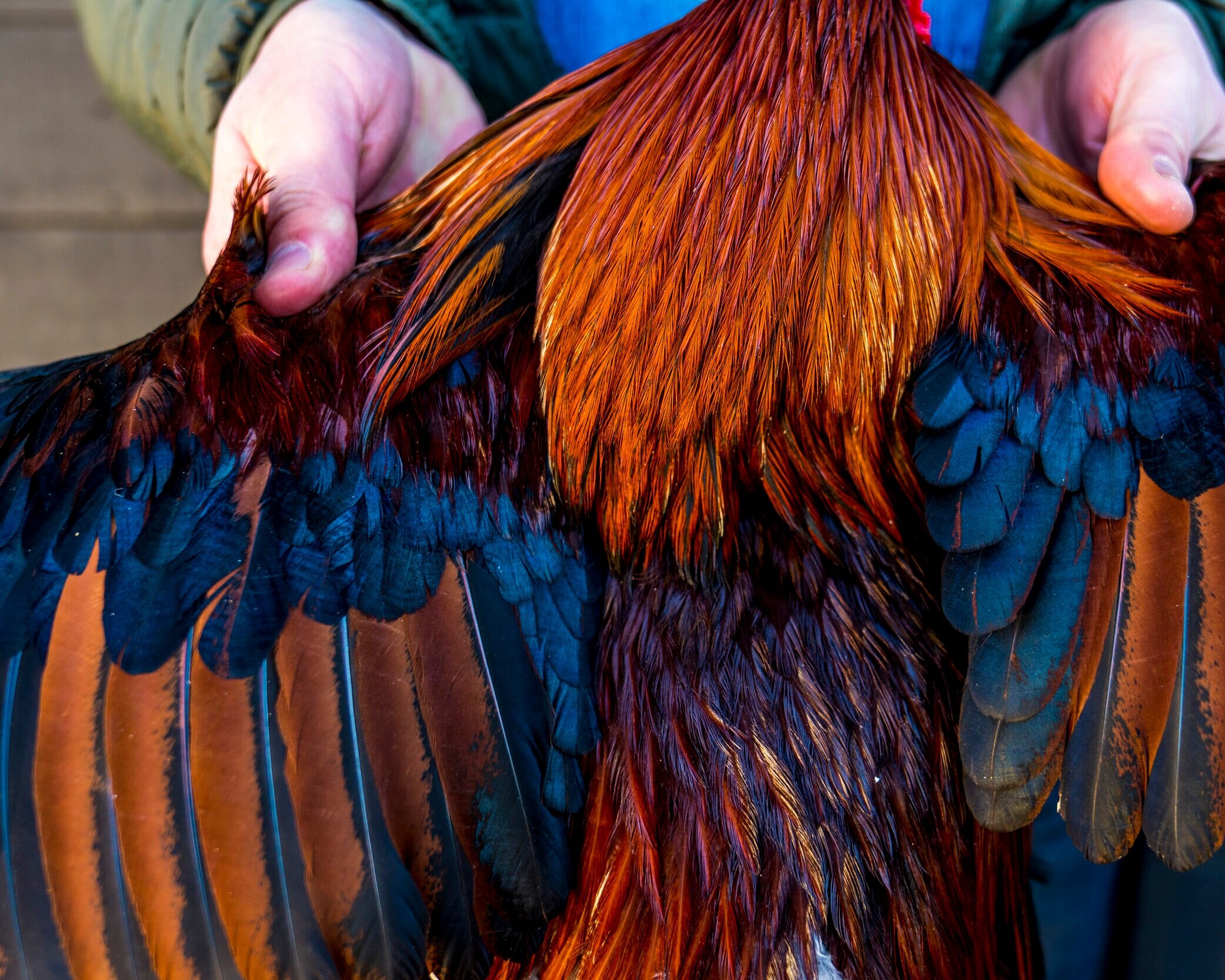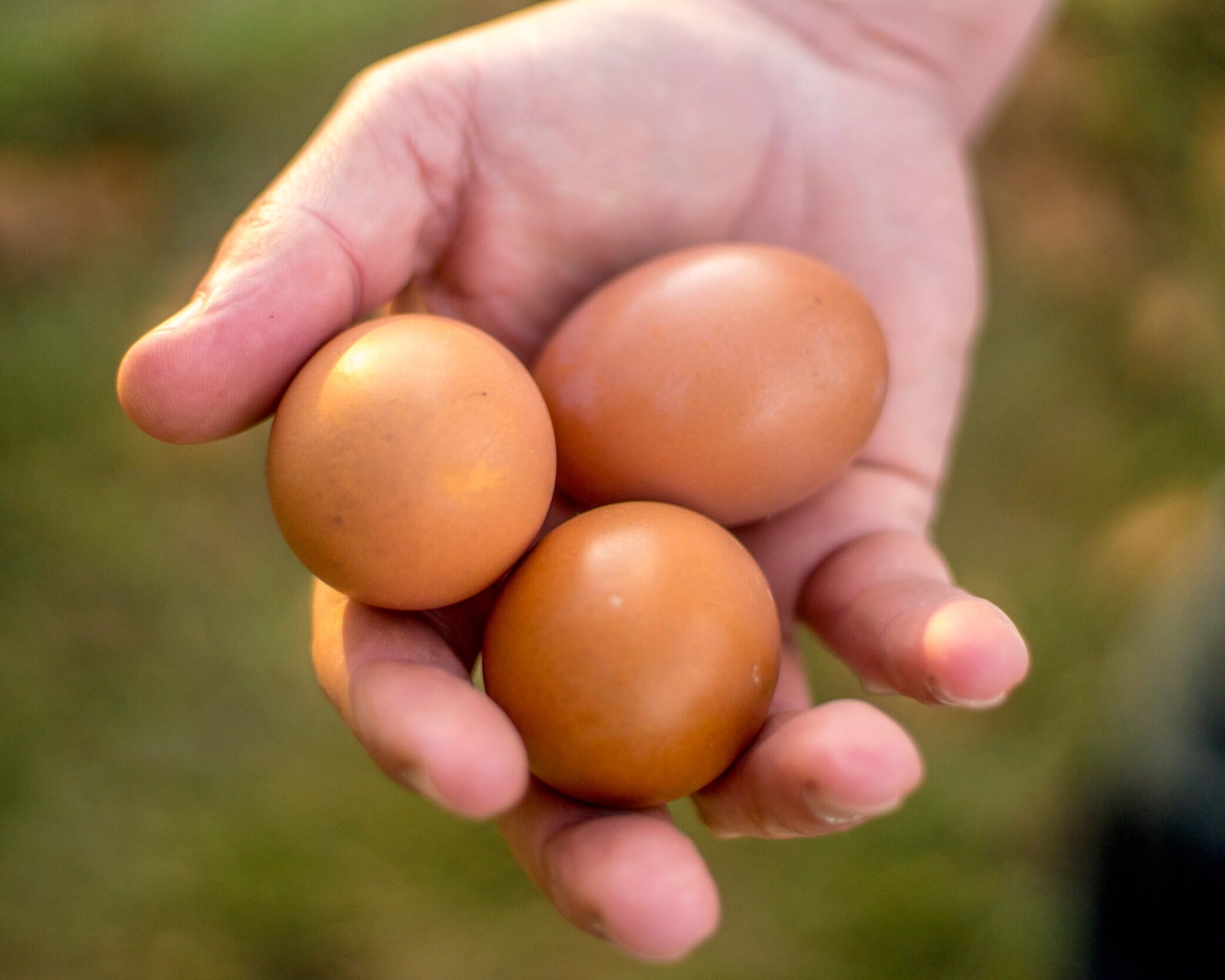a b o u t
Heritage Poultry Conservancy
Animals are important to the farm, because they are part of the farm’s ecosystem. We founded the conservancy to protect heritage breeds. These animals need our support because they’re being replaced by modern varieties, which are all about production and industrial agricultural systems.
With poultry being such an important component to our food system, it’s critical we recognize the genetic diversity that this food resource offers. Our farm is conserving genetic stock of different breeds, and each breed has its own characteristics. Maintaining genetic diversity is fundamentally important to our food security, and what we’re doing with poultry is just one small piece of that effort.
We are constantly working on maintaining these birds so they reflect the best standards of their breeds. These standards are listed in a book called “The American Standard of Perfection,” first printed after the American Poultry Association was founded in 1874.
Criteria for poultry to be marketed as heritage:
APA STANDARD BREED HERITAGE
Poultry must be from parent and grandparent stock of breeds recognized by the American Poultry Association prior to the mid-20th century; whose genetic line can be traced back multiple generations; and with traits that meet the APA Standard of Perfection guidelines for the breed. Heritage Poultry must be produced and sired by an APA Standard breed. Heritage eggs must be laid by an APA Standard breed.NATURALLY MATING HERITAGE
Poultry must be reproduced and genetically maintained through natural mating. Poultry marketed as “heritage” must be the result of naturally mating pairs of both grandparent and parent stock.LONG PRODUCTIVE OUTDOOR LIFESPAN
Heritage Poultry must have the genetic ability to live a long, vigorous life and thrive in the rigors of pasture-based, outdoor production systems. Breeding females should be productive for 5-7 years and males for 3-5 years.SLOW GROWTH RATE
Heritage Poultry must have a moderate to slow rate of growth, reaching appropriate market weight for the breed in no less than 14 weeks. This gives the poultry time to develop strong skeletal structure and healthy organs prior to building muscle mass.
P. Allen Smith, Founder & CEO
About P. Allen Smith
As the age-old question is frequently asked, which came first — the chicken or the egg? My answer to that question is, of course, the chicken!
I became a chicken enthusiast at the age of 10 when I won a blue ribbon for a white Silkie hen I showed at the Warren County Fair in Tennessee. Since that time, I’ve raised hundreds of chickens, ducks, geese, turkeys, as well as a few swans.
I’m particularly fond of heritage breeds and work to ensure these special breeds are around for generations to enjoy.
Protecting the genetics of heritage birds isn’t just about passion. It’s practical. With the rise of factory farming, a lot of people have stopped raising chickens in their backyards. Because of that, these breeds are becoming endangered and we are at risk of losing out on their genetics, which is critical.
To that end, I created the Heritage Poultry Conservancy in 2009. This organization is dedicated to the preservation and support of all threatened breeds and strains of domestic poultry.
At Moss Mountain Farm, we have more than 60 breeds of heritage poultry. Some breeds, such as Silver Gray Dorkings, date back to Roman times. Visitors can come and see nearly 2,000 years of poultry history. While there are specialty breeders that may focus on four to five heritage breeds, I don’t know of any other conservation-oriented poultry collection with 60 breeds that are on ‘the most critical to save’ list, such as Blue Andalusians, White Face Black Spanish or Dorkings. We also keep three colors of the same breed of historic turkeys, as well as six breeds of geese and six breeds of duck.
Dr. Keith Bramwell with P. Allen Smith at Ohio National Poultry Show 2011
HPC activist & Poultry Expert
Dr. Keith Bramwell
Dr. Bramwell is a big supporter of the Heritage Poultry Conservancy. While at the University of Arkansas, he worked with a group of students we call the ‘bird brains,’ who are interested in the old stock. They help with our seminars/workshops, and in selecting breeders. While maintaining more than 15 heritage breeds, Keith actively works with young poultry enthusiasts regarding the many career opportunities in the poultry industry.
Dr. Bramwell studied at the University of Georgia, where he received both his M.S. and Ph.D. in Poultry Science. As part of his graduate program, he developed the ‘sperm penetration assay’, which is still in use today, as both a research tool and as a practical troubleshooting instrument for the poultry industry. He also spent a year studying in the Animal Reproduction and Biotechnology Lab at Colorado State University. Dr. Bramwell has spent the last 17 years teaching poultry and reproduction at the University of Arkansas, one of the leading schools of avian research, and a combined 10 years at the University of Georgia.



